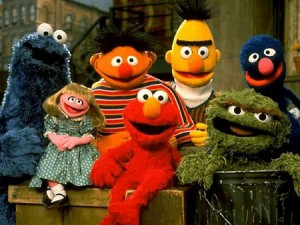
Kelly —
You emailed us 3 years ago asking to do a journalism class writing assignment on our Athletes 4 Autism (A4A) program. We bet you never expected that you would be sitting where you are today as Communications Executive for that same charity. Time has flown… (and, at so many times, so has our sanity).
Out of pure gratitude, we want to take a minute to jog down memory lane:
You wrote your assignment and you could have been on your merry way, but you chose to stay. You connected to our mission so strongly, that you gave Athletes 4 Autism a permanent place in your busy schedule and full heart.
 We went to that assignment interview expecting to get a few others to look at our grassroots effort, but your interview went beyond that. You gave A4A a tool to share its vision with that assignment and you elected to be the lens through which others see that vision full-time. That was the greatest, most selfless gift we could have ever received and we know that we do not thank you enough for it.
We went to that assignment interview expecting to get a few others to look at our grassroots effort, but your interview went beyond that. You gave A4A a tool to share its vision with that assignment and you elected to be the lens through which others see that vision full-time. That was the greatest, most selfless gift we could have ever received and we know that we do not thank you enough for it.
Throughout these 3 years, you’ve worked for us in an internship capacity. That means you work for free: filling in to help wherever is needed, which usually ends up way beyond the scope of writing a press release. You are not incentivized by a paycheck, yet you donate every free minute of your time to us. You haul carts of basketballs, sing and dance at exhibit tables to get us attention, and hug and high-five every single kid that walks through our gym doors because their day isn’t complete until they’ve said bye to you.
Like a family member, you loved us and what we stood for, you defended us against all of the naysayers who called us dumb for not monetizing the program (capitalizing on the disgusting odds that 1 in every 68 kids will now have an autism diagnosis) and giving free lessons to everyone. And then you showed up to help us do just that — to help hundreds of kids in whatever capacity was needed with the hope of raising enough donations to just cover our overhead costs — no questions asked.
You are the definition of loyalty.
You see, the thing about internships is that you are supposed to learn from us, and in so many ways, we know that you have. But, due to your modesty, we are not so sure that you understand how much you have actually taught us.
For one, you have taught us about communications: that all of it — journalism, social media, public relations, etc. — is an exchange of information facilitated by listening and replying.
 Listening can be done two ways. The way we understand it: you can either listen to hear, or you can listen to reply. Outstanding journalists — and people — listen to hear. You had no intention of replying with an opinion; you came to walk in our shoes — to understand as best as you could — by first listening to what we had to say and then translating it into an approachable medium for the public so that they could hear, too.
Listening can be done two ways. The way we understand it: you can either listen to hear, or you can listen to reply. Outstanding journalists — and people — listen to hear. You had no intention of replying with an opinion; you came to walk in our shoes — to understand as best as you could — by first listening to what we had to say and then translating it into an approachable medium for the public so that they could hear, too.
We believe you became a true journalist in that interview moment because you heard our mission and understood its value to the core: so much so, that you begged us until we took you on as an intern. We might have thought you were crazy then, but now we know you’re just crazy in love. (Beyonce would be so proud.)
Kelly, you are one of the most major parts of our program. Instead of coming in with opinions, you came in with work ethic. You showed up, shut up, and worked. With that silence, you have become the loudest voice for the charity. You are the reason people know who we are, you are the reason people know what we do, and you are the reason people know why we do what we do. That is the beginning and end to every charity and you complete us.
Thank you, from the bottom of our hearts, for giving so much of yourself to our autism cause. It hasn’t been easy, but it has been so worth it. We know we have found a forever friend in you and we hope you know you have found a forever home at Athletes 4 Autism.
We love you!
Kevin & Courtney


 My sister Emma has been on a YouTube-kick watching this particular Sesame Street clip with lots of high-pitched singing. Emma is the queen of repetition, and decided not only to sing just as the characters do, but extremely exaggerated. It was like Sesame Street Live!’s Broadway show without costumes. Needless to say, we all got the deer-in-the-headlights stares from the kids and perfectly practiced eye rolls that we were waiting for from the parents. But, oh, how my family laughed at her on-point spontaneity! For a moment, I wished I had the courage to entertain via restaurant cabaret, too.
My sister Emma has been on a YouTube-kick watching this particular Sesame Street clip with lots of high-pitched singing. Emma is the queen of repetition, and decided not only to sing just as the characters do, but extremely exaggerated. It was like Sesame Street Live!’s Broadway show without costumes. Needless to say, we all got the deer-in-the-headlights stares from the kids and perfectly practiced eye rolls that we were waiting for from the parents. But, oh, how my family laughed at her on-point spontaneity! For a moment, I wished I had the courage to entertain via restaurant cabaret, too.









